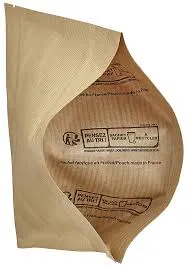- Afrikaans
- Albanian
- Amharic
- Arabic
- Armenian
- Azerbaijani
- Basque
- Belarusian
- Bengali
- Bosnian
- Bulgarian
- Catalan
- Cebuano
- chinese_simplified
- chinese_traditional
- Corsican
- Croatian
- Czech
- Danish
- Dutch
- English
- Esperanto
- Estonian
- Finnish
- French
- Frisian
- Galician
- Georgian
- German
- Greek
- Gujarati
- haitian_creole
- hausa
- hawaiian
- Hebrew
- Hindi
- Miao
- Hungarian
- Icelandic
- igbo
- Indonesian
- irish
- Italian
- Japanese
- Javanese
- Kannada
- kazakh
- Khmer
- Rwandese
- Korean
- Kurdish
- Kyrgyz
- Lao
- Latin
- Latvian
- Lithuanian
- Luxembourgish
- Macedonian
- Malgashi
- Malay
- Malayalam
- Maltese
- Maori
- Marathi
- Mongolian
- Myanmar
- Nepali
- Norwegian
- Norwegian
- Occitan
- Pashto
- Persian
- Polish
- Portuguese
- Punjabi
- Romanian
- Russian
- Samoan
- scottish-gaelic
- Serbian
- Sesotho
- Shona
- Sindhi
- Sinhala
- Slovak
- Slovenian
- Somali
- Spanish
- Sundanese
- Swahili
- Swedish
- Tagalog
- Tajik
- Tamil
- Tatar
- Telugu
- Thai
- Turkish
- Turkmen
- Ukrainian
- Urdu
- Uighur
- Uzbek
- Vietnamese
- Welsh
- Bantu
- Yiddish
- Yoruba
- Zulu
Exploring the Relationship between SBS Density and Material Performance
Understanding SBS Density An Essential Metric in Material Science
SBS density, or Styrene-Butadiene-Styrene density, is a crucial property in the realm of material science and polymer engineering. Styrene-Butadiene-Styrene is a thermoplastic elastomer that combines the properties of rubber with the processing advantages of plastic. Its unique characteristics make it widely used in various applications, from adhesives and sealants to automotive parts and paving materials. Understanding the density of SBS is essential for optimizing its performance and application methods.
What is Density?
Density is defined as mass per unit volume and is typically expressed in grams per cubic centimeter (g/cm³) or kilograms per cubic meter (kg/m³). In the context of SBS, density provides insight into how much material is present in a given volume, impacting its mechanical properties, processing behaviors, and ultimately, its applications. For SBS, the density is influenced by its composition, molecular weight, and degree of crystallinity, which can vary based on manufacturing processes.
Importance of SBS Density
The density of an SBS material plays a significant role in determining its performance characteristics. For instance, higher density often correlates with enhanced mechanical strength, thermal stability, and resistance to wear and tear. This is particularly important in applications where the material is subjected to stress, such as in automotive parts or road surfaces. Conversely, a lower density can contribute to improved flexibility and impact resistance, making it suitable for applications where elasticity is paramount.
Factors Influencing SBS Density
1. Molecular Composition The ratio of styrene to butadiene in the SBS copolymer greatly affects its density. Variations in this ratio can lead to different densities, thereby altering the mechanical and thermal properties of the material.
2. Processing Conditions The method used to synthesize SBS, whether through block copolymerization or other techniques, also influences the density. Temperature and time during processing can lead to varying degrees of crystallization and polymer chain alignment, thus impacting the final density.
sbs density

3. Additives and Fillers Incorporating additives such as plasticizers or fillers can modify the physical properties of SBS, including its density. Fillers may increase the density by adding mass while modifying the mechanical properties and performance.
Measurement of SBS Density
SBS density is typically determined using techniques such as Archimedes' principle, where the material is submerged in a liquid to measure its buoyancy. This method is effective but requires careful calibration and consideration of the liquid's density. Additionally, density can also be approximated using theoretical calculations based on the volume fractions of the constituent components of the polymer.
Applications of SBS Based on Density
The specific density of SBS can guide engineers and manufacturers in selecting the appropriate material for different applications. For example, in the automotive industry, denser SBS grades may be chosen for components requiring high durability against wear, while lighter grades may be preferred for applications demanding flexibility and weight reduction.
In the construction sector, denser SBS is often utilized in road surfacing materials, providing excellent adhesive properties and resistance to environmental degradation. Understanding the density helps in tailoring the material for specific performance needs, ensuring optimal outcomes in various applications.
Conclusion
SBS density is a fundamental property that shapes the utility and effectiveness of Styrene-Butadiene-Styrene in its myriad applications. By understanding how various factors influence density, researchers and engineers can better tailor materials to meet the demands of specific industries. As material science continues to evolve, the importance of metrics like SBS density will remain pivotal in the development of advanced materials that enhance performance across diverse applications.













